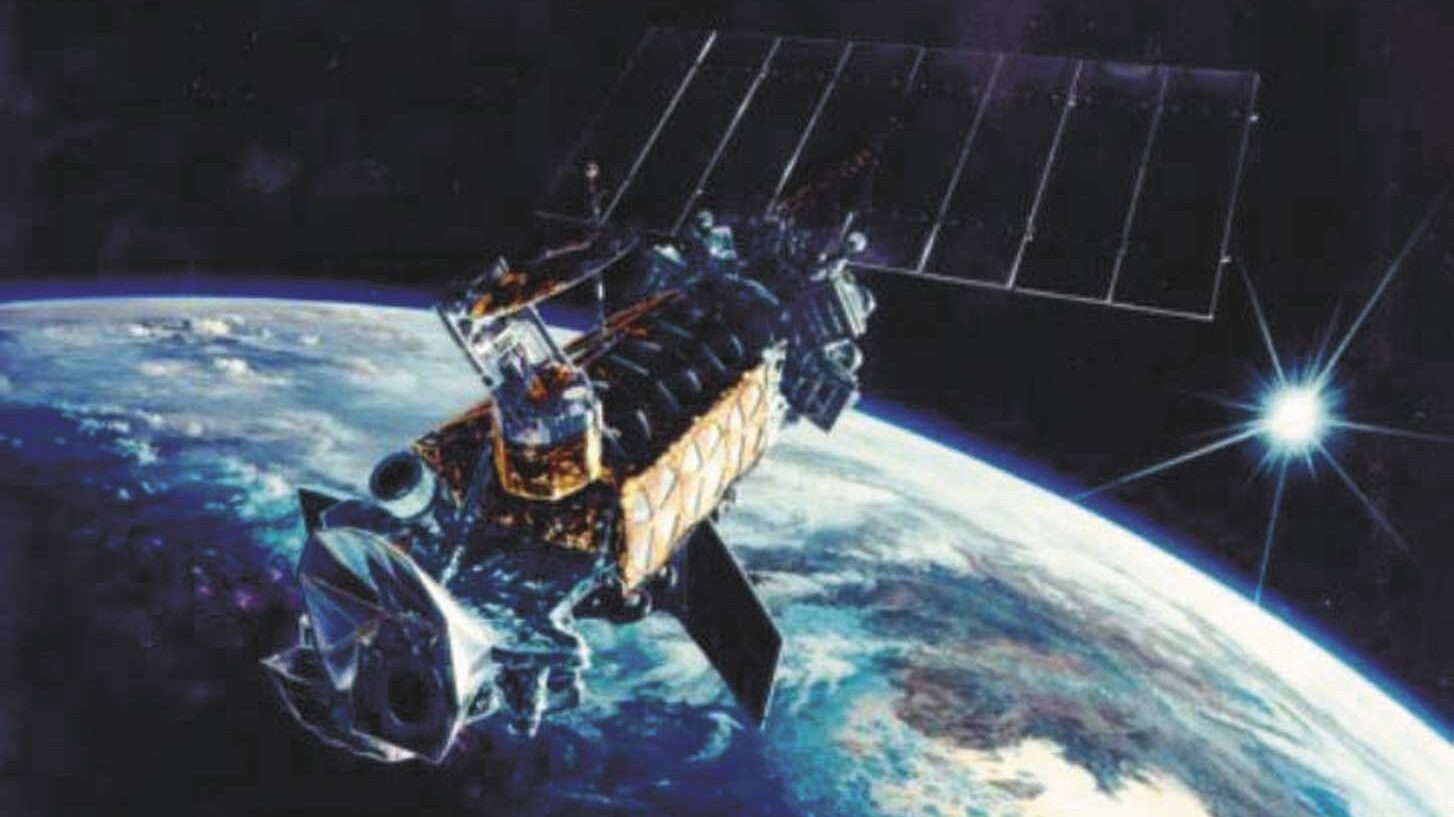Space Force shelves ‘weather data as a service’ model, for now

The Space Force has a multi-tiered effort to replace the dying Defense Meteorological System Program weather satellites, starting with two prototypes. (Air Force)
WASHINGTON — The Space Force continues to be intrigued by the concept of acquiring weather data “as a service” from commercial vendors, but has determined that available services don’t fill their needs just yet, according to a senior Space Systems Command official.
Lt. Col. Joseph Maguadog, SSC program manager for Electro-Optic/Infrared Weather Systems (EWS), explained that SSC’s January market survey of potential vendors, kicked off with a Request for Information in January 2022, failed to turn up any candidates capable of meeting current requirements.
“SSC completed a Weather Data as a Service (WxDaaS) RFI in early 2022 and received several responses,” Magaudog told Breaking Defense in an email on Thursday. “Currently, those solutions do not meet EWS requirements in the near-term in a manner that is more advantageous to the government compared to existing efforts being pursued. SSC believes, however, WxDaaS may provide potential benefits as a longer-term option [fiscal 2030 and beyond], as available capabilities may change in the future.”
Meanwhile, Maguadog said, SSC continues to pursue its two-pronged strategy for filling its near-term need to replace the EO/IR capabilities of the dying Defense Meteorological Satellite Program (DMSP) polar orbiting constellation with new EWS satellites, while at the same time developing low-cost birds for the long term. As such, in February 2022 SSC [PDF] chose two contractors to develop new weather satellite prototypes.
“While SSC is focused on addressing the near-term need as soon as possible, we are also exploring various innovative solutions to meet the long-term need in the most affordable and resilient manner possible and are excited that both prototype demonstrations that began in 2019 are on-track to be significantly cheaper than the available legacy sensors,” Maguadog said.
Space Systems Command’s Electro-Optical/Infrared Weather System technical demonstration is aimed at scoping out technology for future weather data needs. (Space Systems Command)
To begin exploring next-generation, low cost technologies for the future, Orion Space Solutions was tapped to provide a prototype CubeSat for a technical demonstration aimed at scoping out whether militarily-applicable data can be provided using commercial cameras, as well as to test out a new, highly sensitive digital thermometer used in infrared cameras. That CubeSat was successfully launched Tuesday on SpaceX’s Transporter-6 mission [PDF].
The Orion prototype “is a higher-risk, on-orbit demonstration, attempting to meet all Electro-Optical/Infrared (EO/IR) Weather System (EWS) requirements, but with potential for significant cost savings, using commercial cameras and a new microbolometer technology. This prototype will serve as a proof-of-concept to see if this technology will be a viable longer-term option,” Maguadog explained.
General Atomics Electromagnetic Systems Group (GA-EMS) beat out Raytheon Intelligence & Space to provide another prototype, this one aimed taking over for the DMSP satellites in 2025. The last DMSP is expected to go dark in 2026. Congress in the 2020 National Defense Authorization Act ordered the Space Force to launch an EWS pathfinder by September of 2025.
The GA-EMS prototype “is expected to meet the near-term need, and is intended to meet all EO/IR requirements by providing operational data to the warfighters,” Maguadog said.
“The current window for the GA launch is planned between the first and third quarter of FY25,” he added. “This schedule will continue to be refined as the space vehicle development progresses and the pending launch vehicle ultimately gets on contract.”
The Defense Department launched its first DMSP satellite in the 1960s, and has maintained a weather satellite program since then to ensure access to timely weather data specifically tailored for military operations.
Ground-based radars for weather are practically non-existent in Africa, parts of Asia and Latin America, and US civil weather satellite constellations — operated by the National Oceanic and Atmospheric Administration, and in the case of rain- and snow-fall monitoring, NASA — also have limited coverage. The military also requires greater granularity in data on some phenomena, such as cloud cover and fog.
But DoD’s decades-long effort to replace the DMSP satellites historically has been an acquisition tale of woe, dating back to the 1995 and the ill-fated multi-agency National Polar-orbiting Operational Environmental Satellite System (NPOESS) that collapsed in 2010 following multiple Nunn-McCurdy breaches for its skyrocketing costs.
In 2018, the Air Force decided to build two separate constellations to replace DMSP: the Weather System Follow-on Microwave (WSF-M) effort, and the Operationally Responsive Space Number 8 satellite which was to carry an EO/IR sensor suite — the latter of which was killed almost at birth.
The WSF-M program centers on the use of passive microwave imaging radiometry to monitor weather patterns over the oceans, and is now moving forward apace. Space Force ordered the first WSF-M satellite in 2018 from Ball Aerospace, with a launch date planned in 2024. The service in November 2022 exercised a contract option worth $78.2 to buy a second bird for launch in 2028.
The EWS program began in 2019 to fill the EO/IR gap left by the cancellation of Operationally Responsive Space Number 8. At that time, the plan was to launch for on-orbit demonstration by 2023, rather than 2025 as now planned.